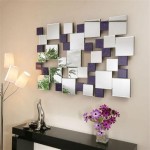Mirror Image in Canvas
Creating a mirror image effect on a canvas element offers a wide range of possibilities for creative coding, image manipulation, and web design. This effect can be employed to create symmetrical patterns, reflect images for artistic compositions, or develop interactive mirroring tools. This article will delve into the techniques for achieving mirror image effects using the canvas API.
Understanding Canvas Transformations
The canvas API provides a powerful set of transformation methods that allow manipulation of the drawing context. These transformations are key to achieving a mirrored effect. The core transformation for mirroring is `scale()`. By using a negative scaling factor for either the x or y-axis, the canvas effectively flips the image along that axis.
Mirroring along the Vertical Axis (X-Axis)
To mirror an image or drawing along the vertical axis, the `scale()` method is used with a scaling factor of -1 for the x-axis and 1 for the y-axis. This maintains the original height while inverting the width. The transformation origin, typically the top-left corner of the canvas, becomes the point of reflection.
Mirroring along the Horizontal Axis (Y-Axis)
Mirroring along the horizontal axis involves using `scale()` with a scaling factor of 1 for the x-axis and -1 for the y-axis. This preserves the width while inverting the height of the content. The image flips along the horizontal axis, creating a reflection below the original.
Combining Transformations for Diagonal Mirroring
More complex mirroring, such as diagonal mirroring, can be achieved by combining `scale()` with other transformation methods like `rotate()`. A rotation of 90 or -90 degrees followed by a horizontal or vertical scaling produces a diagonal mirror effect. Precise control over the axis of reflection requires careful calculation of the rotation angle and scaling factors.
Working with Images
Mirroring images on a canvas requires loading the image using the `Image` object and then drawing it onto the canvas using the `drawImage()` method. The transformations are applied to the canvas context before drawing the image, affecting how the image appears. After the image is drawn, the transformations are typically reset to prevent subsequent drawings from being affected.
Mirroring Portions of the Canvas
To mirror only a specific section of the canvas, utilize the `drawImage()` method with appropriate source and destination parameters. This allows copying a region of the canvas and then drawing its mirrored version onto a different part of the canvas. This technique enables localized mirroring effects without affecting the entire canvas content.
Handling Text Mirroring
Mirroring text requires special consideration. Simply mirroring the canvas context will result in reversed text. To achieve a correct mirrored effect for text, the text must be drawn after the mirroring transformation is applied. This ensures that the text itself is mirrored rather than just its position.
Performance Considerations
Canvas transformations can impact performance, especially when dealing with complex scenes or animations. Minimizing the number of transformations and using them judiciously can improve rendering speed. Consider pre-rendering mirrored images if possible to avoid repeated transformations during animation loops.
Practical Applications of Mirroring
The applications of mirroring in canvas are diverse and extensive. Some examples include: * **Creating symmetrical designs:** Generate complex and visually appealing symmetrical patterns by mirroring simple shapes or images. * **Image editing tools:** Implement mirroring features within online image editors to allow users to flip or reflect sections of their images. * **Game development:** Utilize mirroring for reflections in water, creating mirrored characters or objects, or generating symmetrical level designs. * **Data visualization:** Mirror charts or graphs for comparative data analysis or to highlight symmetrical data distributions.
Using save() and restore()
The `save()` and `restore()` methods are essential for managing transformations effectively, especially when dealing with multiple mirrored elements or animations within a single canvas. The `save()` method stores the current canvas state, including transformations, while `restore()` reverts to the previously saved state. This allows for localized mirroring effects without interfering with other parts of the canvas or subsequent drawing operations.
Dynamic Mirroring
Dynamic mirroring, where the mirrored image updates in real-time based on user interaction or animation changes, can be achieved by redrawing the mirrored content within an animation loop. Each frame involves clearing the canvas, applying the necessary transformations, and redrawing the content based on the current state. This creates a fluid and responsive mirroring effect.

What Is A Mirror Wrapped Canvas

Jeppe Hein Mirror Canvas

Tuesday Tips Diy Canvas Mirror Hege Morris

Mirror Acrylic Painting On Canvas 850

Canvas Wrap Miracle Multi Panel Prints United States And

Mirror Acrylic Painting On Canvas 850

My Photo On Canvas In Boise Idaho Roots Family History Scanning Printing And Framing Service

Mirrored And Textured Mixed Media Canvas

Canvas Print Border Options Mcneil Printing In Orem Utah

Winter Painted Canvas Mirror 121 1301 Afw Com








